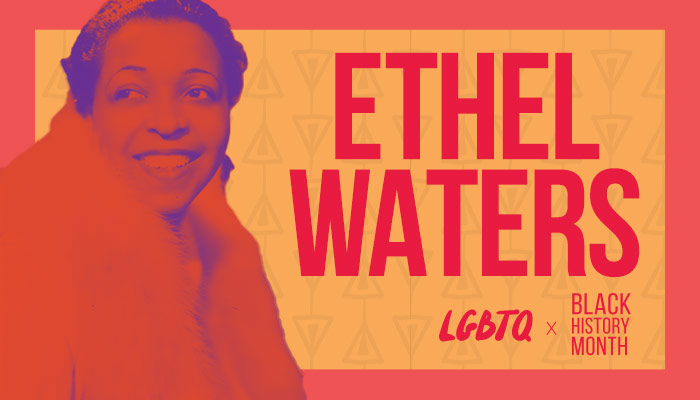
Source: iOne Creative / iOne Creative
During Black History Month, the narrative is typically constructed to highlight Black people who have achieved greatness. But it often leaves those who also identify as LGBTQ+ and gender nonconforming out of the conversation. This year, CASSIUS disrupts the mundane by highlighting Black queer and trans luminaries whose lives and work deserve celebration.
Ethel Waters was born with a voice made to live out loud. Stepping out into the world on Halloween in 1896, she grew up in various towns near Philadelphia and was raised by her grandmother.
She married by the time she was 13 years old but escaped her abusive husband and started working as a maid in a Philadelphia hotel. On the night of her 17th birthday, she sang a couple of songs at a costume party in a Philly nightclub. Eventually, she started working in Black Vaudeville headlining as “Sweet Mama Stringbean” because of her tall, lean figure. Within a couple of years, she was booked in white Vaudeville theaters and became the first African-American star to have a national show on TV.
Although Waters was said to have several other husbands throughout her life, she fell into the crowd of Blues singers along with Gladys Bentley, Bessie Smith, Ma Rainey, and Lucille Bogan who had female lovers.
“What was occurring was occurring clandestinely or within urban settings that were more or less secret and difficult to penetrate,” said Robert Philipson, the director of 2011 documentary T’Ain’t Nobody’s Bizness: Queer Blues Divas of the 1920s. “It was very much under the cover of the night because they could be prosecuted for same-sex activity. There were some open demonstrations of alternative sexuality in the Harlem Renaissance and in Greenwich Village in the late 20s.”
Waters had a relationship with a dancer named Ethel Williams, performing together as “The Two Ethels.” The two even lived together as lovers, although it was unheard of at the time.
One thing Waters was particularly known for wasn’t her best feature — her temper. She was known to fight with her lovers in public, which lead to the occurrences getting written up in tabloids. She would curse out her managers and cause consistent chaos.
“I’m still a mite savage, I guess,” she said once during a play rehearsal. “Maybe there’s real craziness in me. I’ll say things I don’t mean. I can’t help it.
In the 50s, Waters began to see a decline in her career. She couldn’t find any work and her money was almost gone. This is where she said that things were about rock-bottom for her.
In 1959 is when she made a comeback — as a Catholic evangelist. During the last 15 years of her life, she appeared all around the world with the Billy Graham Crusade and made a bunch of hymns and spirituals.
“The voice was gone,” she said. “But that didn’t matter. I could still sing — make a joyful noise to the Lord — and it was a lot different than singin’ blues…”
One could argue many things about why Waters made such a sudden change from queer Vaudeville Harlem nightclub singer to crusading evangelist. As pointed out by a Washington Post reporter, Waters seemed to possess a lonely, needy soul, as most entertainers do. After several failed marriages and affairs, Waters really had nothing else left to her name to attach fulfillment. She was already looked down upon in the lesbian community for her argumentative tendencies and turned towards the one thing that could save a soul like hers — religion.
We lift up Ethel Waters in the spirit of those deemed “too much” by their own communities, today and always.
















